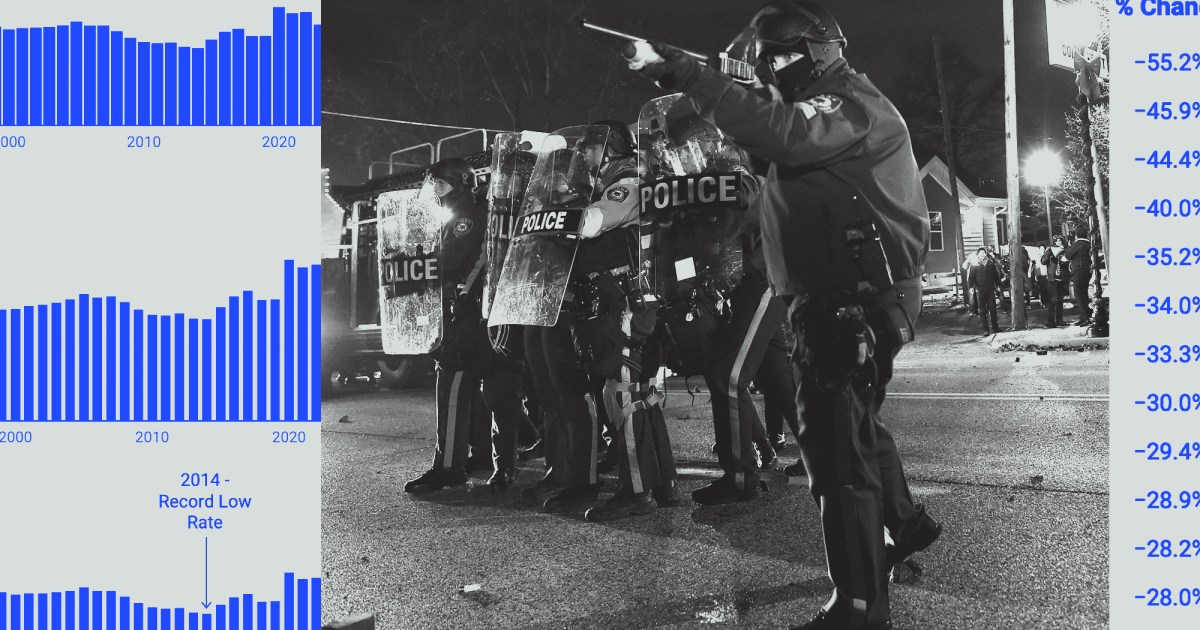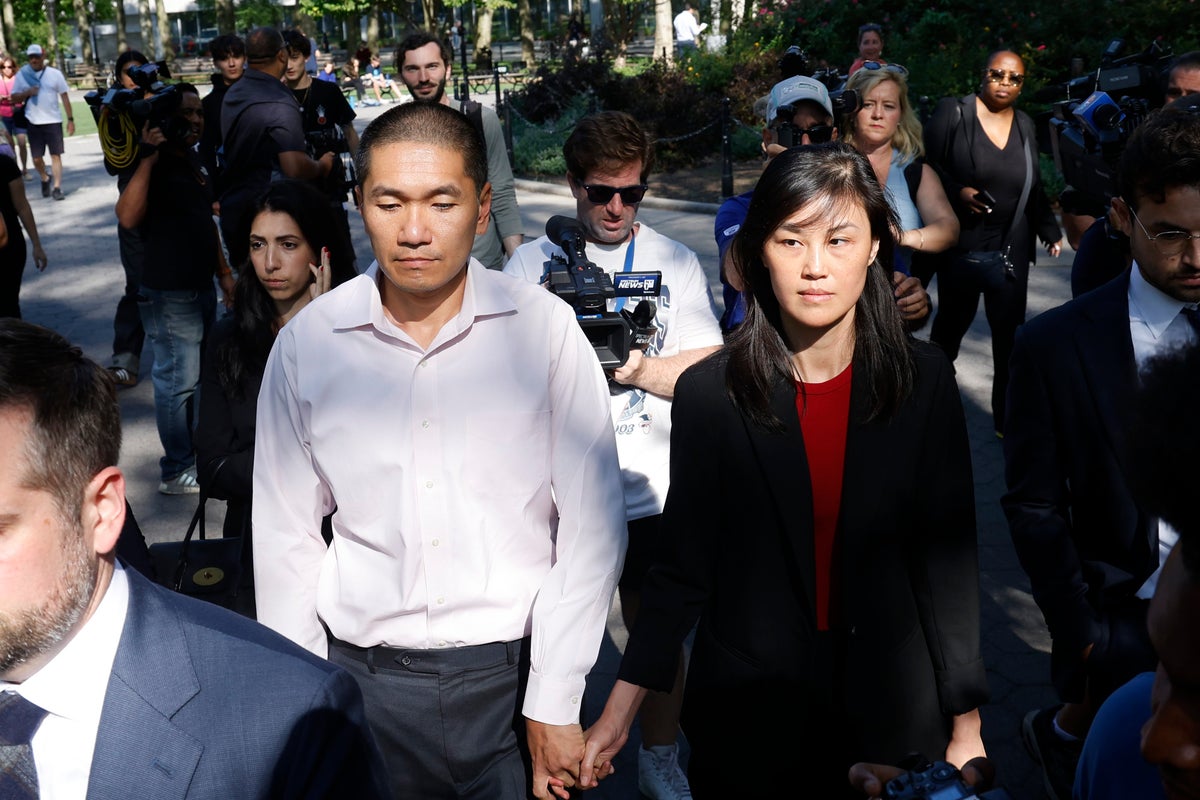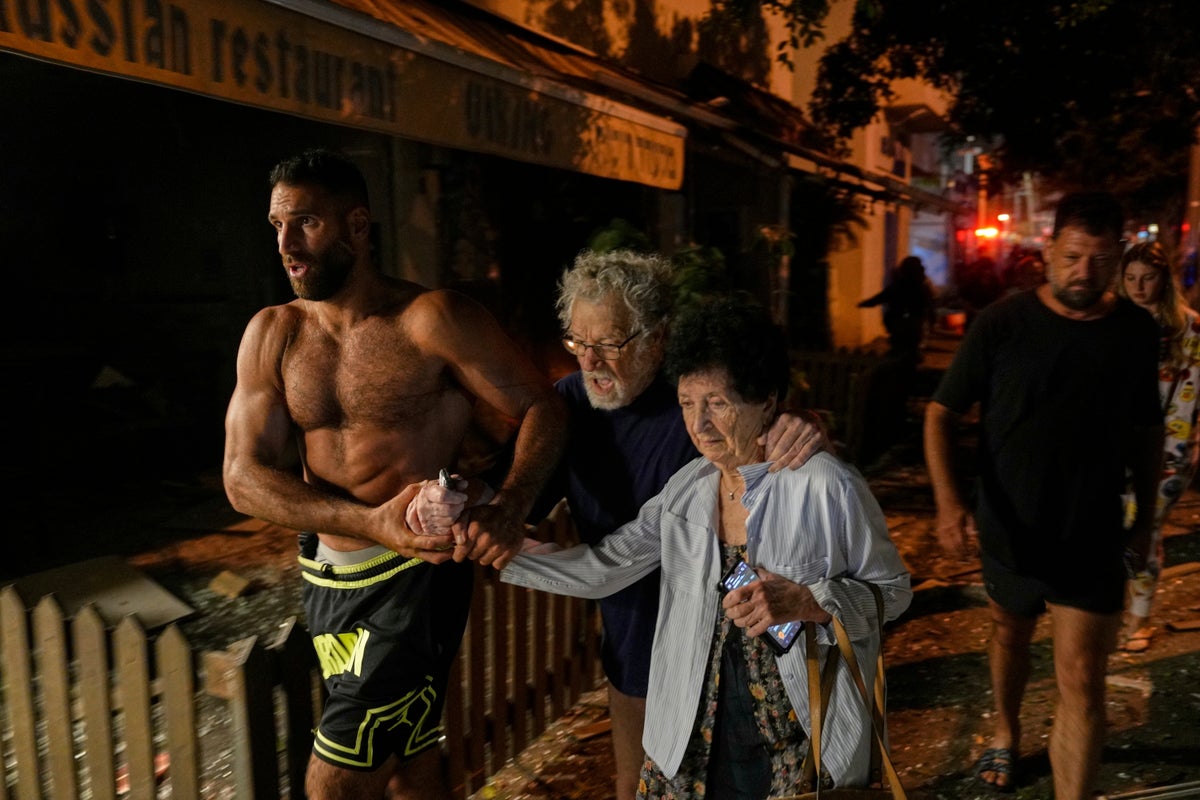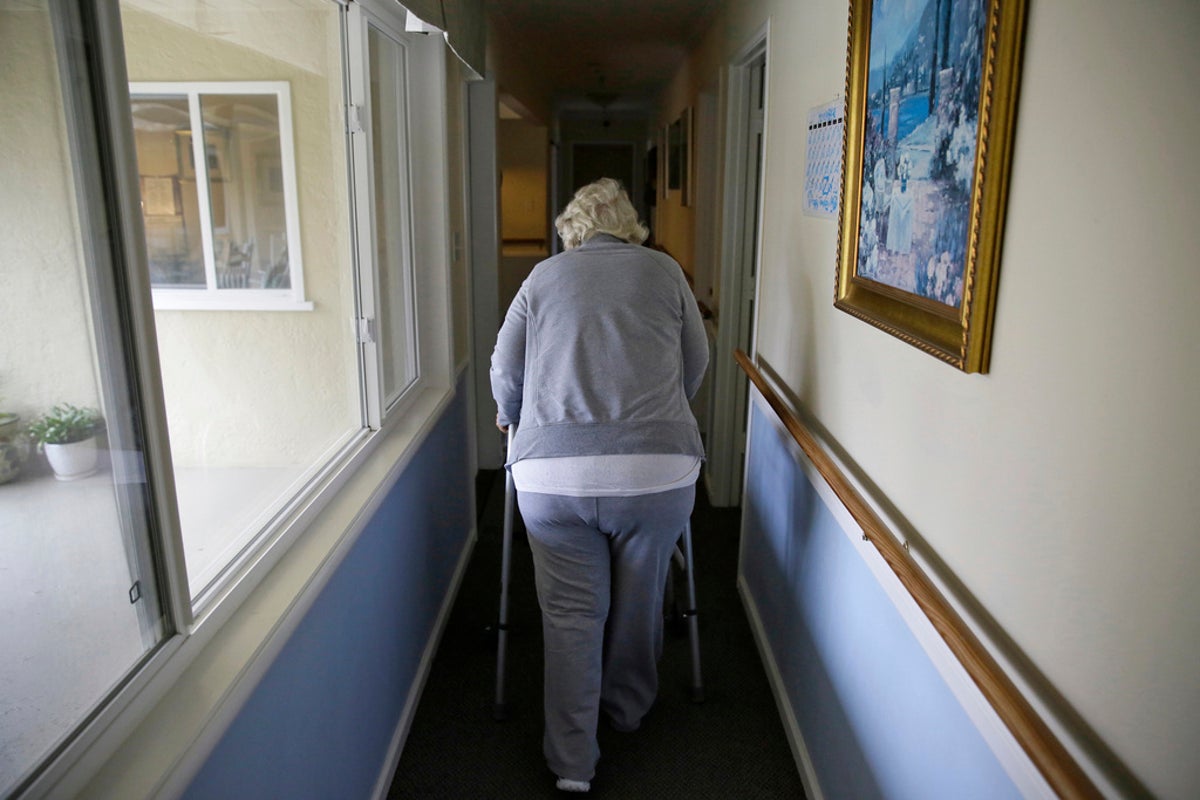There’s a good chance the United States will see the lowest murder rate it has ever recorded this year, a major change from the early pandemic, when killings skyrocketed.
In 2023 and 2024, homicides fell at what appears to be a record pace—and they’re continuing to plummet so far in 2025, according to a recent report by crime data analyst Jeff Asher. There’s a “strong possibility,” he writes, that the country could see fewer than 4.45 murders per 100,000 people in 2025—besting the record low from 2014, which was similar to the rates recorded all the way back in 1962, when the FBI first started tracking data like this.
The extreme decline is happening nationally, with most cities trending in the same direction. No one knows for sure why we’re seeing this shift. But given that killings increased so dramatically in 2020, when the pandemic first struck and cities went into lockdown, Asher and some other criminologists suspect that murders started receding when local governments resumed normal operations and began investing again in jobs, infrastructure, and violence prevention programming.
Interestingly, the plunge in homicides probably wasn’t driven by a decrease in guns (they’re still everywhere) or an increase in police, Asher writes: There are far fewer cops today in most big and medium-sized cities than there were before the pandemic.
Meanwhile, while Americans as a whole are killing less, America’s police are doing the opposite. The number of people fatally shot by cops has increased every year since 2020—in 2024, officers killed at least 1,226 people nationwide, an 18 percent increase over 2019, according to an analysis by the New York Times that drew on data from the Washington Post and the nonprofit Mapping Police Violence.
The uptick in police violence hasn’t occurred everywhere. Many Democratic-leaning states that enacted reforms after George Floyd’s death in 2020 saw police killings fall slightly in the years afterward, according to Samuel Sinyangwe, the data scientist who leads Mapping Police Violence.
But Republican-leaning states that didn’t enact reforms saw major increases. “There has been a backlash to the protests,” Sinyangwe says, referring to the countless demonstrations sparked by Floyd’s murder, “whereby Red states further funded and encouraged more aggressive policing practices and imposed barriers on local jurisdictions trying to enact reforms.”
The federal government seems unconcerned by police homicides. In April, President Donald Trump signed an executive order with the goal of “strengthening and unleashing law enforcement,” and his Justice Department is no longer investigating police departments accused of excessive force. “Safe communities rely on the backbone and heroism of a tough and well-equipped police force,” the order states. The data, it seems, tells a different story.















